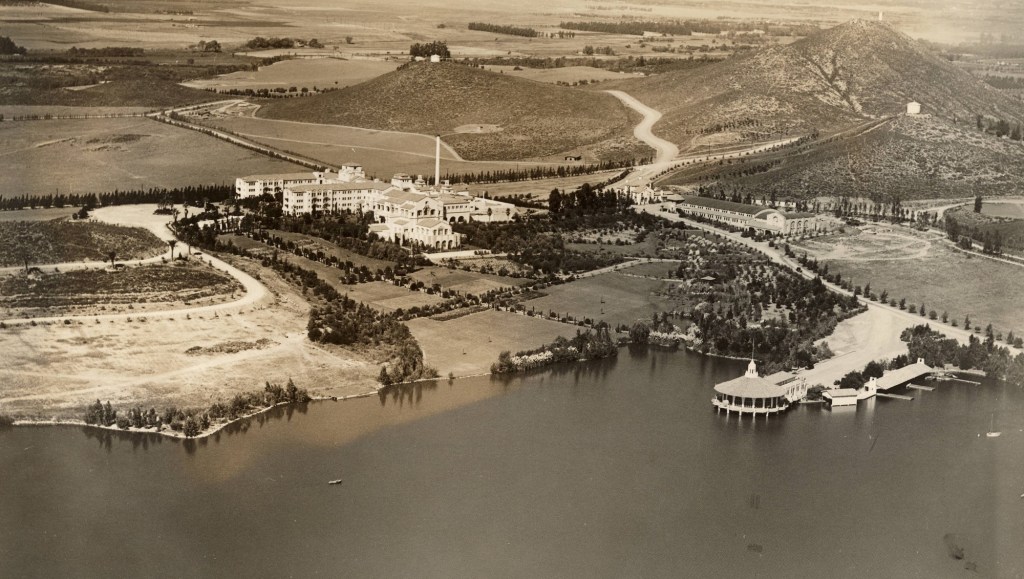Take Riverside’s iconic Mission Inn Hotel & Spa, put it on a hill above a lake and you’ll see what the Norco prison site could become in Kevin Bash’s mind.
The potential the Norco city councilmember sees in the property might be realized if the state moves ahead with its plans, announced Monday, Aug. 4, to close the California Rehabilitation Center by fall 2026.
At the same time, Bash worries what might happen if and when the 2,766-inmate prison shutters. And while Norco in the past has lobbied to close the facility that employs almost 1,200 people, Bash isn’t opposed to keeping it open.
“We have such great respect for the correctional officers that if they fight the battle with the governor and are able to keep it open, we will support them,” Bash, a Norco resident for more than 50 years and a councilmember since 2009, said in a phone interview.
Prison staff, Bash said, “are our friends … some live in Norco … but a lot of them live in Eastvale and different areas that they would have to relocate. I worry about that.”
Bash said he was shocked when the state announced the prison would close.
“Just three weeks ago, I met with the warden and he said that prison is going to be here for many more years,” he said.
State corrections officials cited California’s shrinking inmate population and the need to cut costs in closing the prison, a move that would save an estimated $150 million a year.
The California Department of Corrections and Rehabilitation, which oversees the Norco prison, did not respond Friday, Aug. 8, to a request for comment.
Earlier this week, Emily Humpal, a department spokesperson, said the state “will work to ensure a smooth transition,” including placing Norco staff into similar positions “at other facilities whenever possible.”
Inmates will gradually be transferred from Norco to other prisons before fall 2026 and no inmates will be released early because of the closure, Humpal added.
While it’s been a prison for decades, the Fifth Street property west of the 15 Freeway and overlooking Lake Norconian didn’t start out that way. The Lake Norconian Club, later known as the Norconian, opened in the late 1920s.
With luxuries like landscaped gardens, hot mineral baths and an 18-hole golf course, the resort became a haven for early 20th century celebrities, including Buster Keaton, Babe Ruth, Will Rogers, Charlie Chaplin and Clark Gable. Legendary aviator Amelia Earhart practiced takeoffs and landings on the hotel’s private airstrip.
In 1941, President Franklin Roosevelt converted the resort to a naval hospital. Twenty-one years later, the federal government donated the property to the state, which ran the first-ever, state-funded narcotics rehabilitation program at the site before turning it into a prison.
Today, the property contains a diverse array of architectural styles, Bash said.
“There’s an example of every type of architecture and construction that was performed during World War II,” he said, adding the naval hospital is “almost entirely intact.”
Entering the Norconian “is like walking into 1929,” Bash said. “Walking on that site, it’s like walking back into World War II.”

He draws parallels to downtown Riverside’s Mission Inn, a historic property dating to the 19th century that’s been restored to its former glory and is now a modern-day landmark.
“You have the Mission Inn on a hill overlooking a couple hundred acres on a lake,” Bash said. “It’s every bit as dramatic (and) much larger.”
Bash worries about how the site will be protected if the prison closes. The city can’t afford to secure the site, he said.
“Right now, it’s safe,” Bash said. “It’s surrounded by 20-foot high wire. There’s trusted people inside.”
By contrast, a nearby Navy-built sewage treatment plant is “totally dilapidated” and “a graffiti heaven,” the councilmember added.
Bash said he realizes not everything can be saved on the property.
“We’re not out to try to save everything,” he said. “If we have to tear (a building) down, please tell the correct history and put a plaque up or something. Let’s not forget what happened here.”
Assuming the prison closes, Bash said the city hopes to “shepherd the property into private hands” with a clear understanding of what buildings will be preserved.
“There are certain buildings that we believe can be adaptively reused, that could maintain (their) architectural integrity from World War II and could still be useful,” he said.
The city has clashed with the Navy — specifically, Naval Facilities Engineering Systems Command — about the site’s historical value.
While the Norconian has been on the National Register of Historic Places since 2000, Bash argues that legally, the entire site has been on the register since November 2018.
“We’re pushing to just say statutorily, this entire site’s on the national register,” he said. “Because we’re trying to get people to say ‘Wait a minute, this is a gem. This is a national treasure.’”
Norco’s would be the fifth California prison to close during Gov. Gavin Newsom’s time in office, which started in 2018. The others include Chuckawalla Valley State Prison near Blythe in the Riverside County desert, which closed in 2024.
Ironwood State Prison, just outside Blythe, remains open. Besides inmate firefighter camps, the state also runs the California Institution for Women and the California Institution for Men in Chino.
Staff Writer Brian Rokos contributed to this report.
Originally Published:
<




